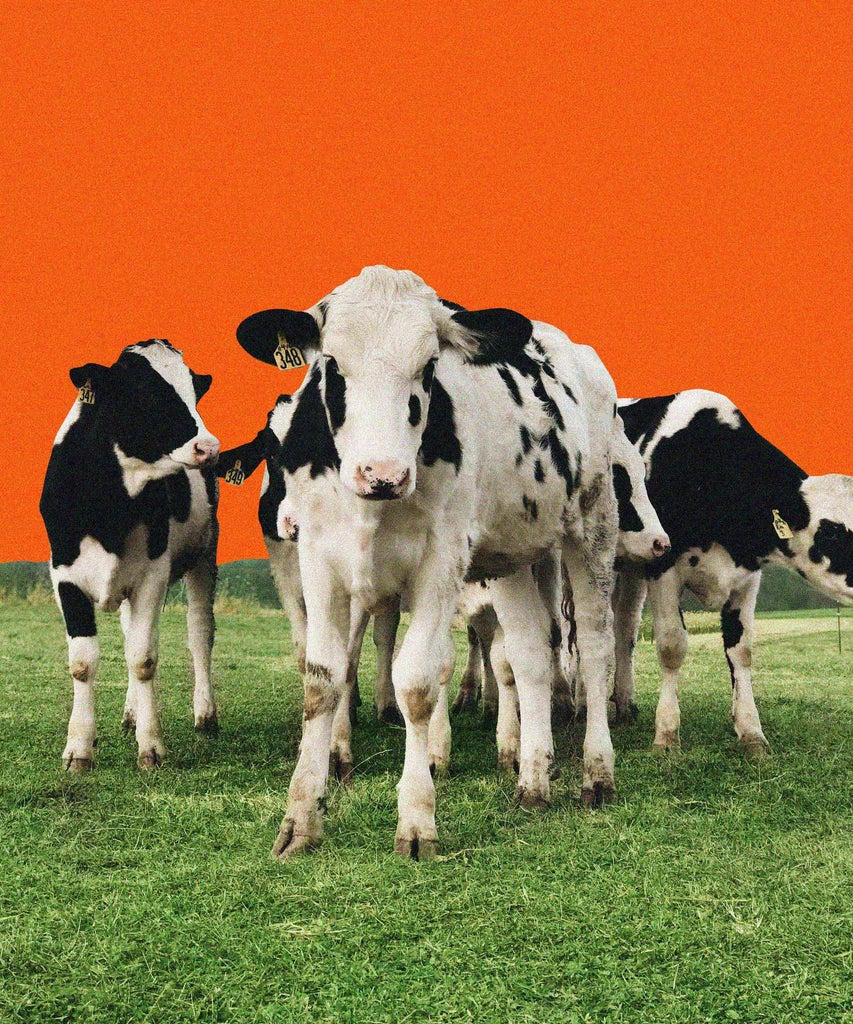
Sustainability and fashion are notoriously disagreeable bedfellows with goals and ideals that are often at odds. This stalemate is most apparent when it comes to leather: a beloved and ancient material whose star is simultaneously enjoying a precipitous rise on the trend scene while also lighting up charged environmental controversy. In one camp is the argument that leather is a naturally sustainable material to be consumed consciously and passed on to future generations all while putting a byproduct of the mass meat industry to use. On the other side of the fence is the ethics-driven argument against animal cruelty and advocation for vegan leather — which, despite its organism-free composition, is often heavy with high-polluting synthetics. This begs the question: if animal-derived leather is sustainable, then can it also be ethical? And if a leather-lover wants to adhere to a lifestyle free of animal byproducts, then is their only option an environmentally harmful polyurethane substitute? “You can argue until you’re blue in the face about those kinds of things,” said Lyndsey Butler, founder of New York-based leather goods brand Veda. Below, with the help of industry experts, we dive a bit deeper into this conscious-fashion paradox. And, spoiler alert: while we may not land on one definitive resolution, we can provide context that will hopefully help inform more thoughtful consumer decisions for the future.

We do a lot of work to make sure that all the leather that we use is a byproduct, which would otherwise be waste. It would either end up in a landfill or burned.
Ricky Lupp, head of product at Nisolo
When choosing to shop for leather with an eye on sustainability, it’s crucial to commit to pieces of the highest quality; it will ensure the item’s durability, longevity, and ability to be repaired (as opposed to replaced) over time. Silver & Riley founder Lola Banjo explained that shoppers should choose full grain leather (the highest-quality cross-section of the material) for a product with maximum heft. “It just [improves] as time goes on, because it has all the grain in the hide,” says Banjo. “Leather should get stronger, and not weaker.” Environmental harm also lurks in the often chemical-intensive finishing process, so shoppers should “look for vegetable-tanned or chrome-free [options],” advises Veda’s Lyndsey Butler. “Those are two ways that you know that the process of tanning is a little more environmentally friendly. The Leather Working Group is a great resource,” she adds, “because they can tell you [which tanneries] are meeting certain standards.” Leather is also inextricably linked to the meat industry, and most of what’s used to make garments is excess from industrial food production. Shoppers shouldn’t be shy about ensuring that the leather they’re buying is part of this supply chain. “We do a lot of work to make sure that all the leather that we use is a byproduct,” says Ricky Lupp, head of product at artisan-goods imprint Nisolo, “which would otherwise be waste. It would either end up in a landfill or burned.”
It’s always a lesser-of-evils question with all of this.
Sydney Brown, Vegan footwear & handbag designer
For shoppers in search of the most cruelty-free leather alternatives, there are a host of options on the market — but, many contain PVC or polyurethane (plastic compounds made up of imperishable toxic chemicals) and will degrade quickly. With these alternatives, explains Anna Fahle Björcke, head of communications at footwear brand Vagabond, “you must face either the durability issue or alternative environmental issues — in other words, materials deriving from nonrenewable fossil sources.” With these options making up the bulk of the leather-alternative world, shoppers have to dig deeper to find substitutes that are driven by natural materials. The goods news is, they do exist. Vegan footwear and handbag designer Sydney Brown explains that natural materials like cork, fennel, pineapple, mushroom, and even algae can be woven into materials with a hide-like hand that contains significantly less plastic than their synthetic counterparts. (While some of these options are not entirely plastic-free, explains Brown, “It’s always a lesser-of-evils question with all of this.”) One standout fiber, Piñatex (a leather invented by Dr. Carmen Hijosa, who spent seven years and a Royal College of Art Ph.D. developing the material) makes use of the 40,000 tons of pineapple-leaf waste that’s generated annually and has been used by H&M and Hugo Boss. “[There’s] a lot of trial and error,” explains Brown, when it comes to innovating new materials. “Research and development is our biggest part of the company, and we’re constantly testing things.”
[Consumers] should challenge the brands that they’re excited to buy products from.
RICKY LUPP, HEAD OF PRODUCT AT NISOLO
Perhaps the most significant thing that a shopper can do is use their spending power to take companies to task. “[Consumers] should challenge the brands that they’re excited to buy products from,” says Nisolo’s Lupp. “They should demand information from those brands and transparency and clarity around that. I think it’s impossible for the consumer to shop consciously if there’s not brands creating product consciously.”

At Refinery29, we’re here to help you navigate this overwhelming world of stuff. All of our market picks are independently selected and curated by the editorial team. The product details reflect the price and availability at the time of publication. If you buy something we link to on our site, Refinery29 may earn commission.
Like what you see? How about some more R29 goodness, right here?
Everyone Wins When Leggings Meet Leather

No comments:
Post a Comment